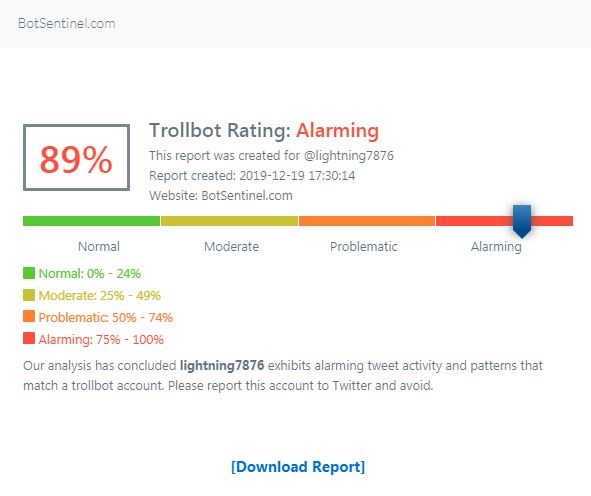

Misinformation can be spread directly by humans, as well as by automated online accounts, colloquially called bots. Previous research has documented the spread of misinformation, rumors, and conspiracies on social media in the aftermath of the 2010 Haiti earthquake, the 2012 Sandy Hook Elementary School shooting, Hurricane Sandy in 2012, the 2013 Boston Marathon bombings, and the 2013 Ebola outbreak. This trend of misinformation emerging during times of humanitarian crises and propagating via social media platforms is not new. Tweets containing false claims also had less tentative language than valid claims. A similar study demonstrated that fully false claims about the virus propagated more rapidly and were more frequently liked than partially false claims. The authors found no difference in engagement patterns with misinformation and verified information, suggesting that myths about the virus reach as many people on Twitter as truths. In one sample of tweets related to COVID-19, 24.8% of tweets included misinformation and 17.4% included unverifiable information. Rumors have spread about the origin of the virus, potential treatments or protections, and the severity and prevalence of the disease. Though the pandemic is ongoing, evidence is emerging regarding COVID-19 misinformation on social media. Dr Tedros Adhanom Ghebreyesus, the Director-General of the World Health Organization, referred to this accelerated flow of information about COVID-19, much of it inaccurate, as an infodemic. One study found that 33% of people in the United States report having seen a lot or a great deal of false or misleading information about the virus on social media. Unfortunately, this breadth, and the speed with which information can travel, sets the stage for the rapid transmission of misinformation, conspiracy theories, and fake news about the pandemic.

The number of research articles focusing on COVID-19 has also grown exponentially more research articles about the disease were published in the first 4 months of the COVID-19 pandemic than throughout the entirety of the severe acute respiratory syndrome (SARS) and Middle East respiratory syndrome (MERS) pandemics combined. Among Americans, 72% report using an online news source for COVID-19 information in the last week, with 47% reporting that the source was social media. Īs the virus spread across the United States, media coverage and information from online sources grew along with it. The United States accounts for 24.9% of the worlds COVID-19 cases, more than any other country. As of March 2021, the COVID-19 pandemic has been responsible for over 115 million documented cases, resulting in over 2.5 million deaths. Globally, 2020 has been characterized by COVID-19, the disease caused by the SARS-CoV-2 virus.


 0 kommentar(er)
0 kommentar(er)
